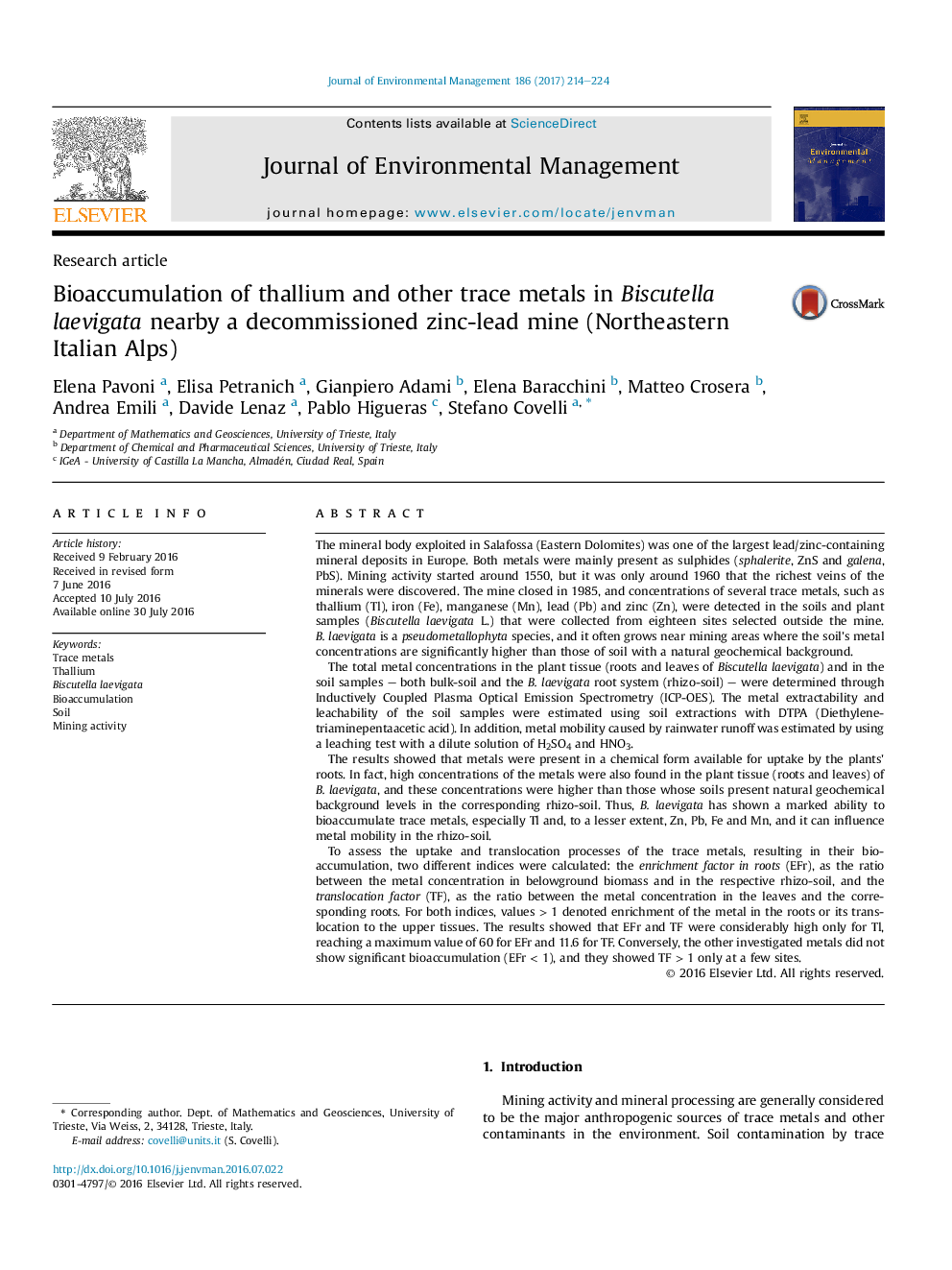| Article ID | Journal | Published Year | Pages | File Type |
|---|---|---|---|---|
| 5117421 | Journal of Environmental Management | 2017 | 11 Pages |
â¢Three analytical methods were compared to study trace metal availability in soils.â¢Trace metals in plant tissues were higher than in the corresponding rhizo-soil.â¢Relatively high Enrichment and Translocation Factors were only found for Thallium.â¢Biscutella laevigata is a good indicator of Thallium bioavailability in soils of mining areas.
The mineral body exploited in Salafossa (Eastern Dolomites) was one of the largest lead/zinc-containing mineral deposits in Europe. Both metals were mainly present as sulphides (sphalerite, ZnS and galena, PbS). Mining activity started around 1550, but it was only around 1960 that the richest veins of the minerals were discovered. The mine closed in 1985, and concentrations of several trace metals, such as thallium (Tl), iron (Fe), manganese (Mn), lead (Pb) and zinc (Zn), were detected in the soils and plant samples (Biscutella laevigata L.) that were collected from eighteen sites selected outside the mine. B. laevigata is a pseudometallophyta species, and it often grows near mining areas where the soil's metal concentrations are significantly higher than those of soil with a natural geochemical background.The total metal concentrations in the plant tissue (roots and leaves of Biscutella laevigata) and in the soil samples - both bulk-soil and the B. laevigata root system (rhizo-soil) - were determined through Inductively Coupled Plasma Optical Emission Spectrometry (ICP-OES). The metal extractability and leachability of the soil samples were estimated using soil extractions with DTPA (Diethylenetriaminepentaacetic acid). In addition, metal mobility caused by rainwater runoff was estimated by using a leaching test with a dilute solution of H2SO4 and HNO3.The results showed that metals were present in a chemical form available for uptake by the plants' roots. In fact, high concentrations of the metals were also found in the plant tissue (roots and leaves) of B. laevigata, and these concentrations were higher than those whose soils present natural geochemical background levels in the corresponding rhizo-soil. Thus, B. laevigata has shown a marked ability to bioaccumulate trace metals, especially Tl and, to a lesser extent, Zn, Pb, Fe and Mn, and it can influence metal mobility in the rhizo-soil.To assess the uptake and translocation processes of the trace metals, resulting in their bioaccumulation, two different indices were calculated: the enrichment factor in roots (EFr), as the ratio between the metal concentration in belowground biomass and in the respective rhizo-soil, and the translocation factor (TF), as the ratio between the metal concentration in the leaves and the corresponding roots. For both indices, values > 1 denoted enrichment of the metal in the roots or its translocation to the upper tissues. The results showed that EFr and TF were considerably high only for Tl, reaching a maximum value of 60 for EFr and 11.6 for TF. Conversely, the other investigated metals did not show significant bioaccumulation (EFr < 1), and they showed TF > 1 only at a few sites.
Graphical abstractDownload full-size image
